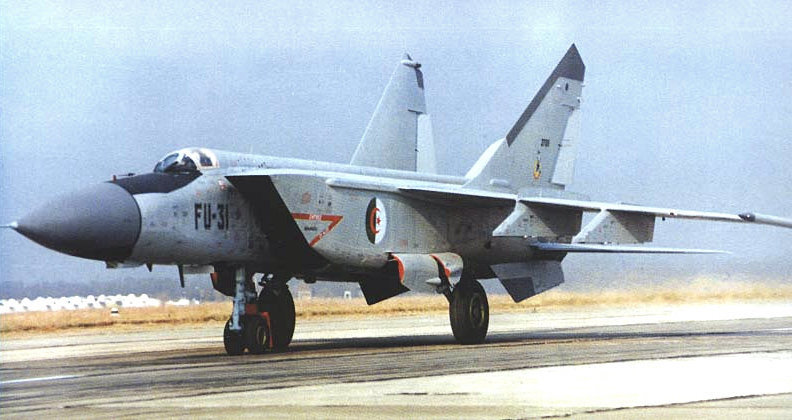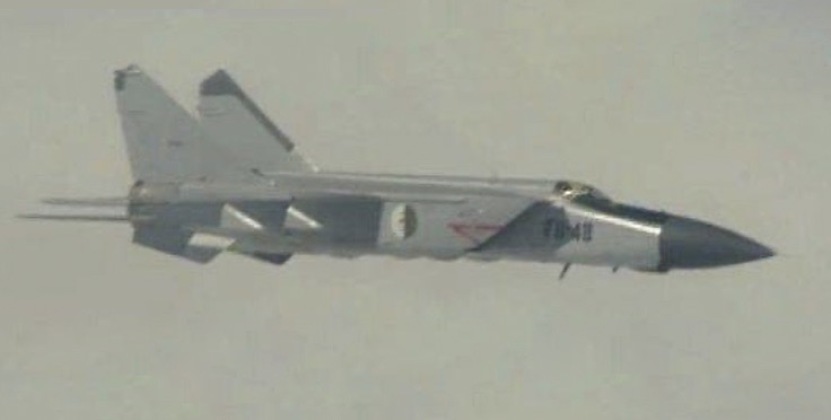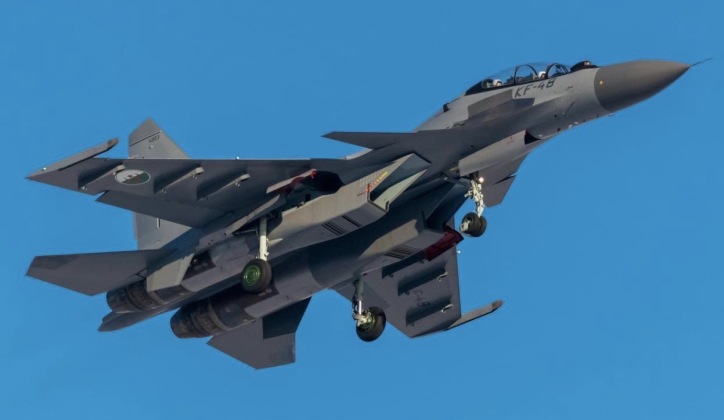The Algerian Air Force has reportedly retired its final squadron of MiG-25 Foxbat heavyweight interceptors, with the aircraft making their last fights during celebration of the country’s sixtieth independence anniversary. Fifteen of the aircraft were in service at the beginning of 2022 including 11 combat variants and four reconnaissance variants, although the fleet at its height was estimated at close to 40 aircraft. Algeria was one of four major foreign operators of the MiG-25 alongside Libya, Iraq and Syria, although the collapse of the former two countries after U.S.-led attacks in 2003 and 2011, and straining of Syrian resources due to a long conflict with NATO powers and Western-backed insurgents from 2011, has meant that none of them still actively operate the Foxbat. The Syrian Air Force’s sole MiG-25 squadron, which remans one of the most capable in its fleet, did not receive upgrades comparable to those in Algerian service and may be returned to service in future with the aircraft still deployed to military bases in the country. The Foxbat’s high operational costs have limited the number of clients for the aircraft, with all four major clients being oil producers capable and Algeria and Syria having been the first two to receive the class.

The Algerian Air Force first received the MiG-25 in 1978, with 20 interceptor and nine reconnaissance variants being delivered alongside 150 R-40 air to air missiles which were the most capable the USSR offered at the time. This came 14 years after Algeria received its first Soviet fighters, MiG-15BiS, MiG-15UTI and MiG-17 jets, which were delivered as aid in 1964 followed by Il-28 bombers the following year. Followup orders for the class would expand the Algerian fleet before Foxbat production ended in 1985. While the MiG-25 saw its most famous engagements in Soviet, Indian and Iraqi hands, the former two in reconnaissance missions and the third tackling American F-15s in the Gulf War, it also saw some action in the Algerian Air Force. In 1988 when Algeria hosted a congress of the Palestinian Liberation Organisation (PLO), which Israel considered conducting air strikes against, the Algerian Air Force used MiG-25s to enforce a no fly zone around the area of the congress with two Foxbaats kept constantly on patrol. When Israeli F-15s approached Algerian airspace the scrambling of further MiG-25s reportedly had a decisive impact and forced the Eagles to turn back. Israeli forces had previously found Soviet-operated MiG-25s impossible to shoot down using F-4 despite multiple attempts, and even the F-15 notably lost its last known engagement against the class when flown by the U.S. Air Force over Iraq in 1991.

Algerian Foxbats also leveraged their long ranges and very high altitudes and speeds to frequently comb the western basin of the Mediterranean to the Atlantic Ocean in the 1980s during a period of high tensions with Morocco and Spain, with neither country having assets capable of seriously threatening the Soviet built jets. Moroccan fighters often refrained from even attempting to intercept their targets, while Spain responded by purchasing F-18 fighters from the United States which remain in service today. With the F-15 having seriously struggled and in the large majority of cases failed to shoot down the MiG-25, however, the lighter F-18 with less firepower, a much lower speed and altitude and a significantly weaker radar was not expected to fare much better than the Cold War era F-4s they replaced. The more capable F-15 and F-14, however, remained unaffordable for the southern European state.
The MiG-25’s near invulnerability declined as the U.S. Air Force began to introduce the AIM-120 air to air missile in the 1990s, which boasted active radar guidance and a superior flight performance than the previous top air to air missile used by Western fighter sized aircraft the AIM-7. While Algeria modernised its MiG-25s in the 1990s with fourth generation level avionics, the aircraft lost their elite status to the Su-30MKA fighter which by 2020 had seen over 70 ordered from Russia, and although slower, lower flying and reliant on missiles with much smaller payloads otherwise very comfortably surpassed the Foxbat in all performance parameters while having much lower maintenance requirements. The Su-30MKA is currently considered the most capable fighter on the African continent, and possibly in the Arab world rivalled only by the Royal Saudi Air Force F-15SA and its derivative developed for Qatar the F-15QA.

The MiG-25 remains a major icon of Soviet combat aviation and perhaps the iconic combat jet to have flown for Algeria. As by far the most capable aircraft in terms of air to air performance ever exported by USSR during the Cold War, the Foxbat provided a vital means of countering the top Western fighter the F-15 Eagle, although it lost its elite status within the Soviet fleet in the 1980s to its successor the MiG-31 interceptor as well as to the Su-27 air superiority fighter. Aside from the MiG-31, and the bomber sized Tu-28 interceptor from the 1960s, the MiG-25 is the heaviest operational aircraft designed for air to air combat, as well as the fastest and the highest flying. Its Mach 3.2 speed was utilised to evade interception multiple times, from Sinai to Kashmir, while its altitude ceiling of close to 40,000 metres has no close rivals. With the class retired from Algerian service, it is likely that the MiG-25’s decades long service life has come to an end 52 years after it first became active in the Soviet Air Force. The class’ high operational cost means a restoration of Syria’s sole unit to a higher state of operational readiness remains unlikely, although not impossible, with limited resources in the war torn country potentially making acquisitions of lower maintenance and lighter MiG-29 units a more cost effective prospect particularly as Russia has offered them as aid. With Libya having been in a state of civil war ever since its war with NATO in 2011, the possibility of a Libyan state emerging capable of sustaining meaningful operations for its own Foxbat fleet remains even slimmer. 2022 thus likely marks the death of an icon as the last operational Mach 3+ interceptor unit retires.
